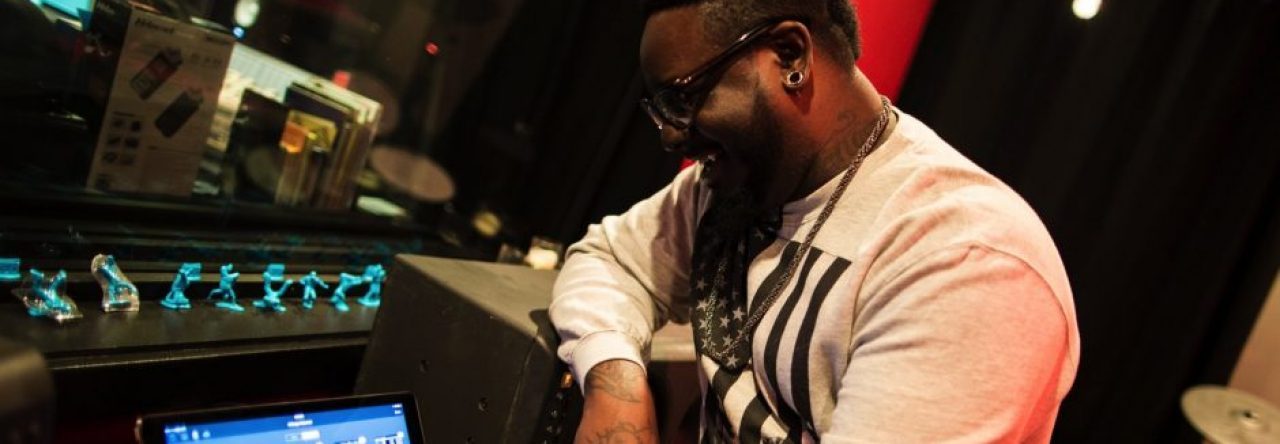T-Pain’s music is synonymous with auto-tune, as he is famous in the music world for his use of this technology. Faheem Rashad Najm, better known as T-Pain, began his debut with his first album Rappa Ternt Sanga in 2005. His success did not come, however, until his 2007 album Epiphany that hit number one on the US Billboard 200 chart [1]. Along with a series of successful singles, including “Buy U A Drank”, 2007 marked the year that T-Pain achieved legitimate success and began to popularize auto-tune. T-Pain, further, developed auto-tune apps called “I Am T-Pain” and “I Am T-Pain 2.0”. Additionally, T-Pain’s extensive use of auto-tune has brought him onto talk shows such as Ellen to entertain this technology. On top of this, T-Pain released versions of songs that he recorded without auto-tune, such as the acoustic “T-Pain Mashup”. This emphasized the prevalence of auto-tune in his musical aesthetic, and raises the question about how specifically T-Pain used auto-tune in his songs and how he impacted both the use of auto-tune and hip hop music.
Other popular rap artists of the era, such as 50 Cent and Jay-Z, had a less melodious sound to their music, and employed rapping instead of singing. These artists typically did not expand their vocal range and did not often create music fit for a club/dance setting. T-Pain, on the other hand, made music that was appropriate for and popular in club and dance settings. His use of auto-tune allowed for a blend of both singing and rapping in his music, giving him a larger expressive range than typical rapping. In songs like “Buy U A Drank”, there is a presence of a more upbeat tempo added to the song, similar to what Cher used it for in 1998. This was done by altering the typical voice and allowing it to flow better with the harmony. This contrasts with typical hip hop as rapping can sound very similar to talking. Similarly, T-Pain combines the differing aesthetics of R&B, Soul and Rap. To compare, Run DMC used a method in their music in which they rhymed at the end of every verse to add rhythmic cadence. T-Pain follows this method to achieve fluidity with auto-tune as he ends every verse in his songs with significant auto-tune presence. This proves that T-Pain did not only influence other artists but also was influenced by those prior to his success. T-Pain revolutionized hip hop in this way, as he aided the transformation of rapping into a form of dance-able music and also fit into several different, yet popular genres [2].
While many listeners assume that auto-tune is used to mend vocal imperfections, this is not always the case [3]. Artists like T-Pain used it for creative purposes. These creative purposes include a wider range, change in timbre, and smoother hooks. Auto-tune technology, therefore, added a robotic and electric spin to the otherwise traditional rap song [4].
Example of other rap songs compared to T-Pain: 50 Cent- Many Men
T-Pain uses autotune as a form of creativity and expression. This is proven in the robotic and electric musical sounds throughout his song. In many pop songs auto-tune cannot be as easily detected by the untrained ear. If we compare “Buy U A Drank” to a Pop song such as Miley Cyrus’s “Party in the USA” that also uses autotune, it does not have the same effect. T-Pain uses it to add creativity, while Miley Cyrus uses it to perfect pitches and make the sound more appealing to listeners.
Additionally, artists have followed in T-Pain’s footsteps and chose to use autotune in creative ways. For example, Frank Ocean uses it in minute 2:11 of his song “Chanel”. As well as Frank Ocean, Beyonce uses it in her song “7/11” to give it an electronic feel.
[1]T-Pain, Teddy Verseti, Teddy Pain, Teddy Penderazdoun, Akon, Shawnna, Ray Lavender, Tay Dizm, Yung Joc, Kardinal Offishall, Cham, and Jay Lyriq, writers, Epiphany, Zomba Recording, 2007, CD.
[2]Hattie Collins, “How the Auto-Tune conquered the charts,” The Guardian, June 16, 2008, Accessed February 20, 2018. https://www.theguardian.com/music/musicblog/2008/jun/16/howtheautotuneconqueredthe.
[3]Ben Lerner, “Auto-Tune,” BOMB, no. 114 (2010): 22-23. http://www.jstor.org/stable/29546243.
[4] Jill Noble, “The Auto-Tune Epidemic,” The Socionomist, November 2011.
